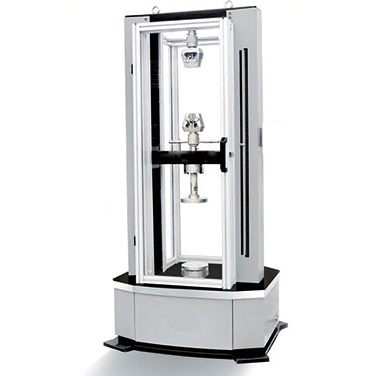What are the precautions for choosing universal testing machine?
What are the precautions for choosing universal testing machine?

Universal testing machine using servo motor power, screw drive, microcomputer or Microsoft system operation display, the main body and dynamometer separation, with easy operation, stable and reliable work, high testing accuracy, stable loading characteristics. The whole machine has simple appearance and adjustable testing space. Measurement in the use of high-precision sensors, can display the test results of the digital curve, and can be directly stored, processing, printout, with networking and other functions. So what do users need to pay attention to when choosing a universal material testing machine?
Ⅰ.The test range selection:
According to the maximum load of the test material, select the maximum load required for the testing machine (i.e., the range). It is recommended that the material test load is about 70%-90% of the range of the tester to ensure that the test test stroke and extend the service life of the tester.
Ⅱ. The accuracy selection:
At present, the accuracy of the domestic testing machine is generally used in 1 and 0.5 level. General material testing to choose a level of testing machine is sufficient, do not need to spend more money to improve the accuracy. Scientific research and material analysis need 0.5 level of precision testing machine. 0.5 level and 1 level of precision testing machine in fact there is no significant technical differences. The calibration methods and means are basically the same, unlike the calibration points. With the development of sensor technology, the linearity of sensor elements has reached a very high level. As long as there are no defects in the measurement circuit and good anti-interference performance, there is no problem for all testing machines to reach 0.5 level of accuracy. For electrical measurements, the limits of class 0.5 have been far exceeded, and the relative error defined by the national standard remains to be seen.
III. Selection of test stroke and dynamic performance (bandwidth):
The test stroke is an important parameter of the testing machine. A suitable test stroke will facilitate the measurement of the test stroke, and small scales will be measured. Effective test stroke and dynamic performance are a contradiction. Simply increasing the effective test stroke comes at the expense of dynamic performance (bandwidth). The direct result of reduced bandwidth is that the yield of the material fluctuates insignificantly, or even the yield is a plateau phenomenon. Therefore, this parameter should also be effectively considered in the selection.
IV. Synchronous performance selection :
The data collected from the material tests are simultaneously the load and deformation of the material. If they are not synchronized, the load will appear forward before the deformation, or the deformation will appear forward before the load. For the problem that the same load corresponds to two deformations when measuring an elastic material during the advance and return stroke, the advance and return curves do not overlap.